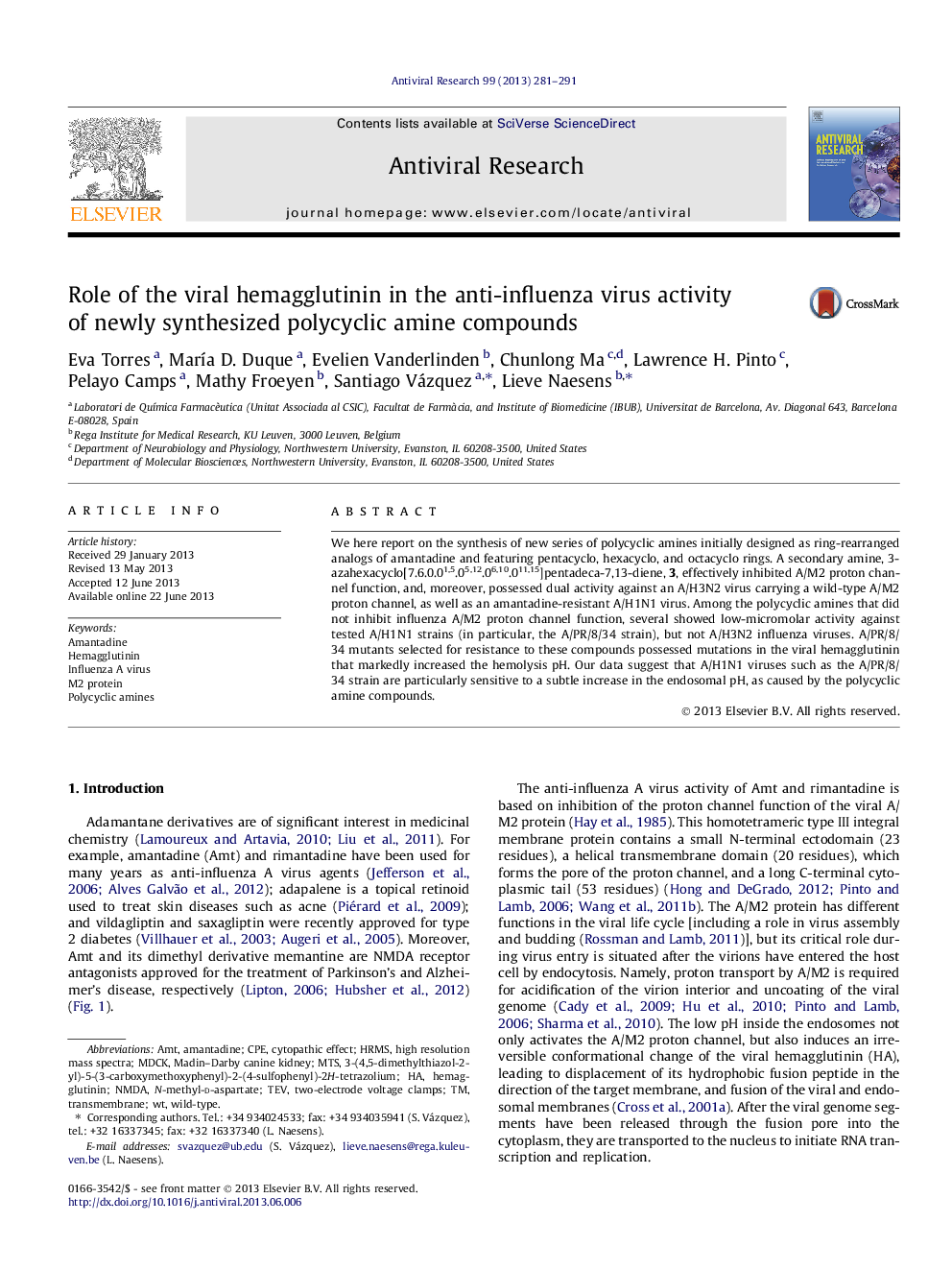| Article ID | Journal | Published Year | Pages | File Type |
|---|---|---|---|---|
| 2510065 | Antiviral Research | 2013 | 11 Pages |
•We report on the synthesis of polycyclic amines designed as ring-rearranged analogs of amantadine.•Only one compound inhibited A/M2 proton channel function.•However, they showed low-micromolar activity against A/H1N1, but not A/H3N2 influenza viruses.•A/PR/8/34 mutants selected for resistance to these compounds possessed mutation in the viral hemagglutinin.
We here report on the synthesis of new series of polycyclic amines initially designed as ring-rearranged analogs of amantadine and featuring pentacyclo, hexacyclo, and octacyclo rings. A secondary amine, 3-azahexacyclo[7.6.0.01,5.05,12.06,10.011,15]pentadeca-7,13-diene, 3, effectively inhibited A/M2 proton channel function, and, moreover, possessed dual activity against an A/H3N2 virus carrying a wild-type A/M2 proton channel, as well as an amantadine-resistant A/H1N1 virus. Among the polycyclic amines that did not inhibit influenza A/M2 proton channel function, several showed low-micromolar activity against tested A/H1N1 strains (in particular, the A/PR/8/34 strain), but not A/H3N2 influenza viruses. A/PR/8/34 mutants selected for resistance to these compounds possessed mutations in the viral hemagglutinin that markedly increased the hemolysis pH. Our data suggest that A/H1N1 viruses such as the A/PR/8/34 strain are particularly sensitive to a subtle increase in the endosomal pH, as caused by the polycyclic amine compounds.
